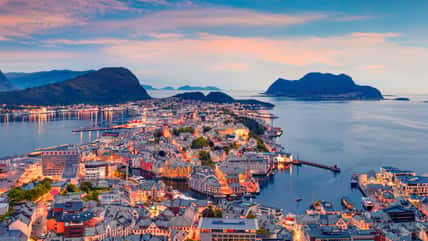Close To 2 Million Children Across The World Have Developed Asthma Due To Traffic Pollution

Besides other facets of the global climate crisis—including natural disasters, erratic weather, and decreased air quality—the health of our populations is more at risk than ever before.
The most vulnerable group in this population to pollution-based health issues? Children.
A new study from Lancet Planetary Health published this month found that long-term exposure and increasing amounts of NO2 (Nitrogen Dioxide) in the air is rapidly rising rates of childhood asthma, which is the inflammation of the lungs and airways. The study was conducted between the years 2000-2019.
“We estimated that 1.85 million new pediatric asthma cases were attributable to NO2 globally in 2019, two-thirds of which occurred in urban areas.” The study concluded.
Most of this pollution is caused by traffic in major cities. Specifically, more than 13,000 cities globally.
These scientists used ground monitoring technology to measure the amounts of NO2 present. What releases NO2? It occurs in emissions from vehicles, chemical and power plants, and other industrial settings.
In Europe and the US, there was a recent decrease in cases connected to NO2 levels, which is possible thanks to air-quality regulations taking effect in these regions. However, cases continue to rise in Southeast Asia, the Middle East, and Sub-Saharan Africa.
Of global asthma cases, 13% were linked to NO2, and those living in highly-populated urban areas made up 50% of these cases.
The Health Effects Institute and NASA funded the first study, and one of its co-authors, Susan Anenberg, was also part of a study supported by NASA and the Wellcome Trust.

fizkes – stock.adobe.com
Sign up for Chip Chick’s newsletter and get stories like this delivered to your inbox.
The other study looked more closely at trends in “fine particulate matter” and “air pollution-related mortality.” Scientists ultimately discovered that nearly 2 million excess deaths in 2019 could be linked to this kind of pollution.
The solution? We need to reduce our emissions, primarily by reducing the use of fossil fuels, which will reduce greenhouse gas emissions and potentially improve the climate.
And if we can radically reduce the pollution in our air, then we’ll all be breathing easier.
Both studies appeared this January in Lancet Planetary Health, and you can check out a visual representation of global NO2 concentrations in over 13,000 cities as of 2019 here.
If true crime defines your free time, this is for you: join Chip Chick’s True Crime Tribe.
More About:Human Interest





